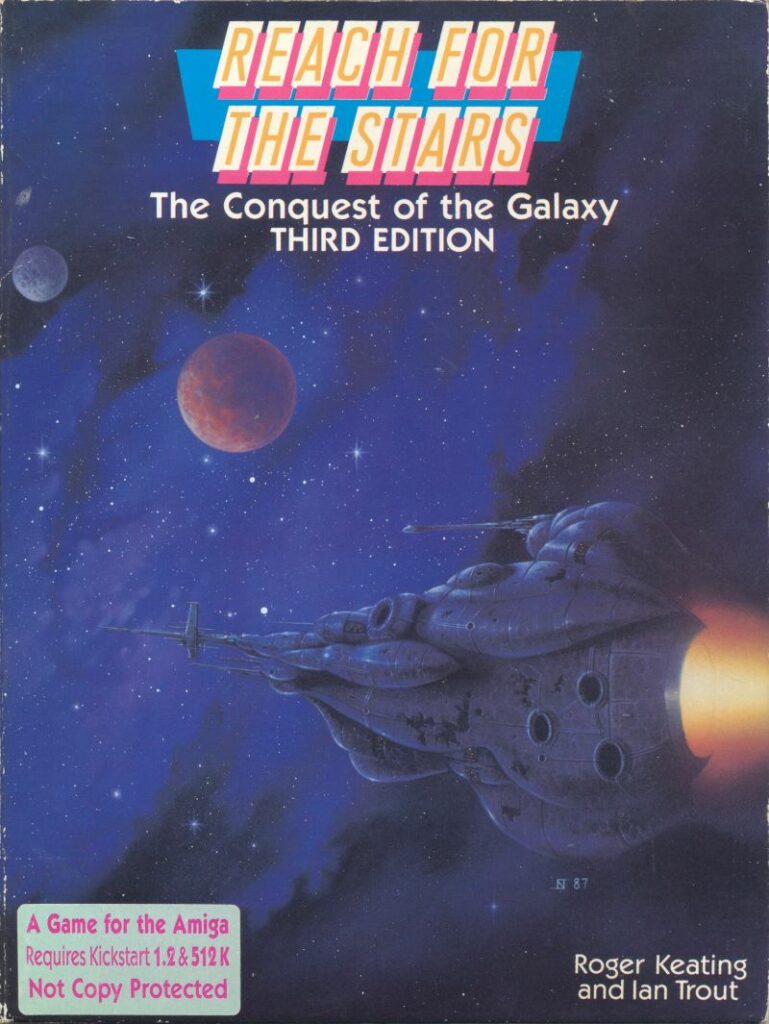
Back to Reach for the Stars ! As I explained in my first AAR, I liked the ruleset but had some issues with population being more a drag than a boon. I was probably not the only one, because the third edition (in 1988) included an “advanced mode” with massive changes to the ruleset, in particular on how economy worked. To play the most “modern” experience possible, I am also going to use the Macintosh version of the game – it has a very different look & feel.
If you haven’t already, I recommend you read the first AAR as I won’t come back on features that are common to both rulesets. I do not recommend you read both AARs back to back.
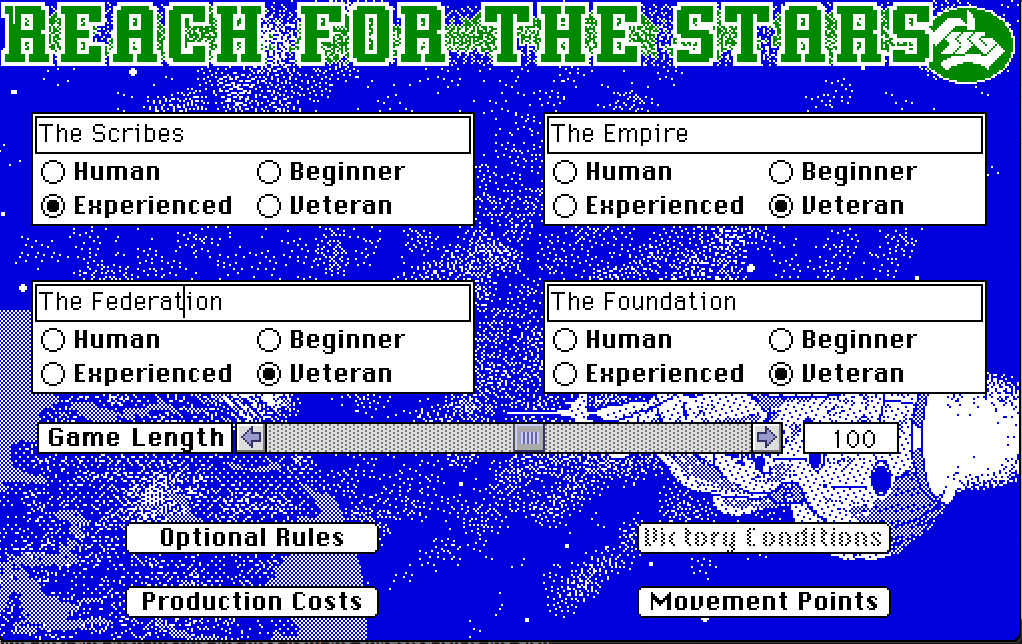
A. Slow beginnings – turn 1 – 39
This time, my homeworld is Ascella. I already like Ascella a lot, because it has a perfect defensive location :
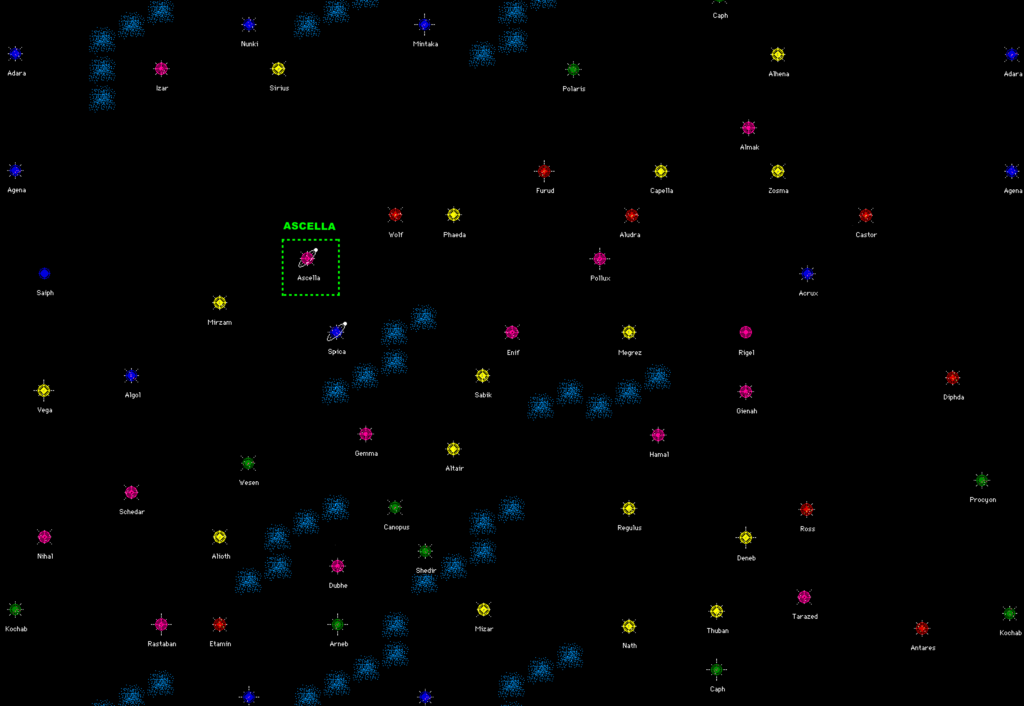
In the Advanced Rules fleets have a maximum range and at the beginning of the game they can only reach a system 3 tiles away from any colonized system – the trip itself can be as long as needed. Ascella only has 3 systems in range (themselves in range of one extra system each). Overall, I am unlikely to receive an early visit.
Alas, Ascella starts with only 35 in industrial capacity – the minimum possible for a starting planet. It is not that crippling though, in advanced mode the industry capacity can increase if the planet has a very good social level. The caveat is that in advanced mode high social level increases the population but also the maximum population AND the maintenance cost of said population, from 1 by unit to 4 by unit ! People get comfy, and then they start to forget they have an Empire to conquer. Sad state of affairs, really.
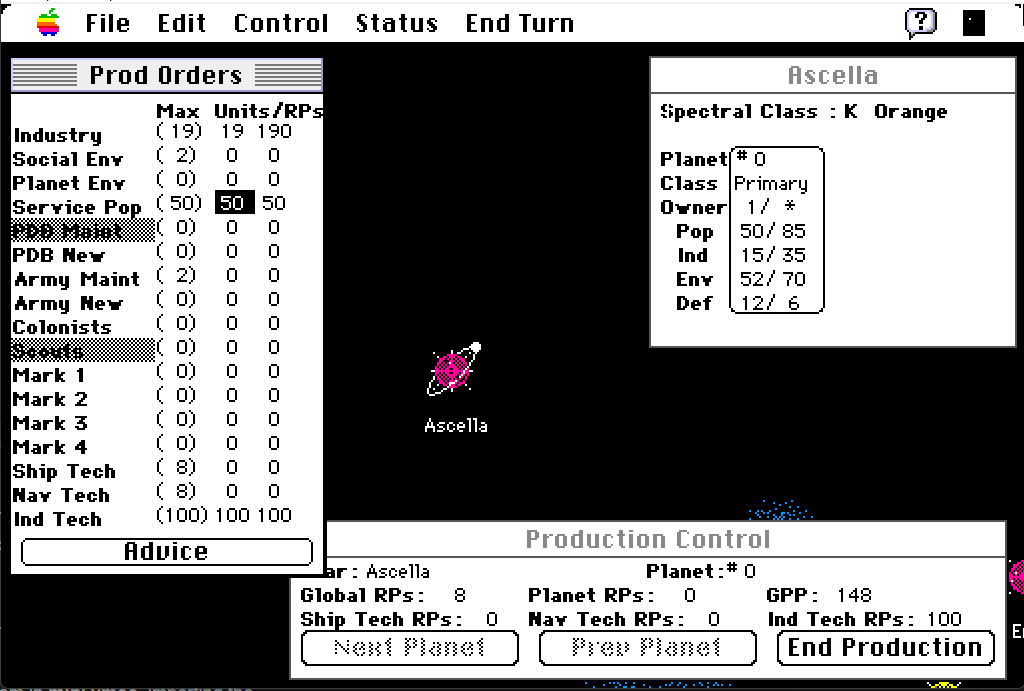
My strategy is to immediately dissolve my starting defence (what are the odds that an enemy has spawned in one of the three neighbouring planets ?) and first focus on industry technology – another novelty of the advanced mode that will eventually allow me to multiply (first by x1.25) all my production points. Schools, hospitals and other social policies will wait – we have a five-turn industrial plan to follow !
Turn 7 I build my first Mark 1 spaceship – those are expensive now (14 in the normal game, 40 in the advanced mode) but in this ruleset there are no scout ships. I scout the neighbouring systems : Mirzam on the left has one poor planet, Wolf on the right has one hostile world (not interesting anymore in this ruleset), but Spica at the bottom can be turned into a productive world. And soon enough :
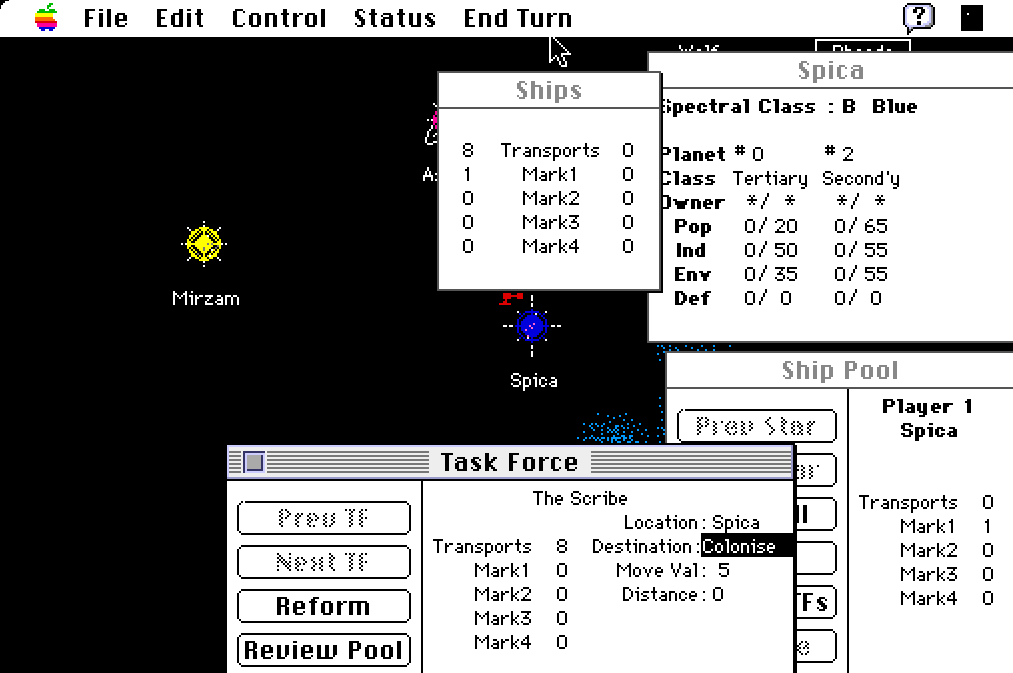
I eventually reach Industry Level 2, and I can now increase the social conditions in Ascella, which in turns increases the maximum population and the industry level. I also develop Spica, but this is slow as I cannot just dump production point en masse from Ascella – in advanced mode the population on a planet determines how much stuff you can build there every turn.
Turn 20 is when I know by experience I should start to be worried about the AI players, but they are nowhere in sight. I see some distant clashes during turn resolution, but that’s pretty much all, so I carry on developing and developing… until turn 40 !
By turn 39, I have upgraded my industry level further, and heavy research in ship tech and navigation has allowed me to travel further and to produce brand new “Mark II” combat ships. With the extra range, I find a very interesting world :
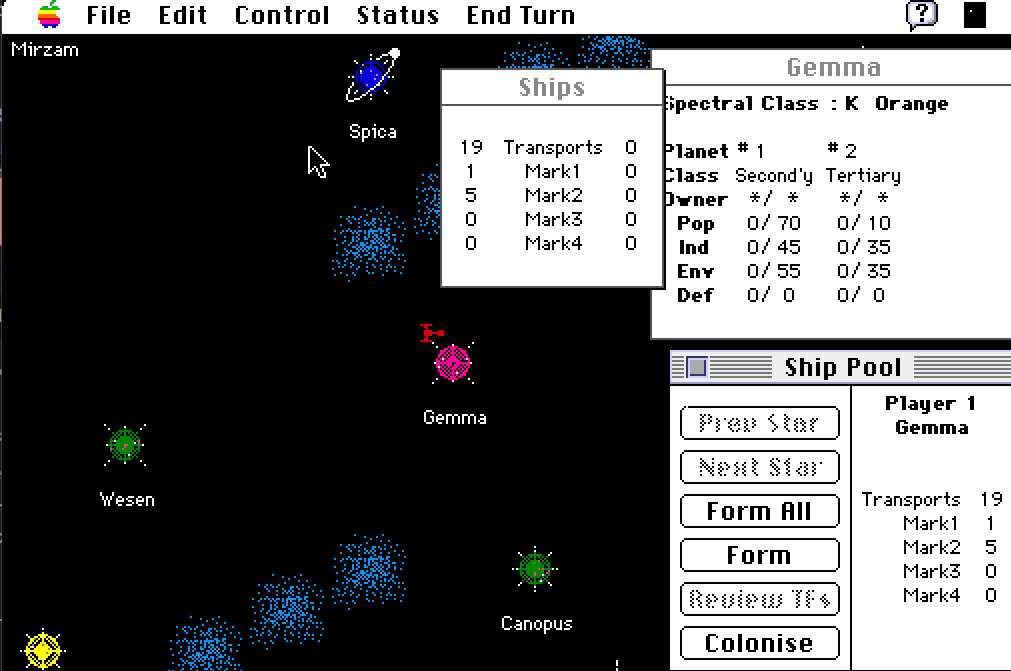
For now, I still have not met anyone.
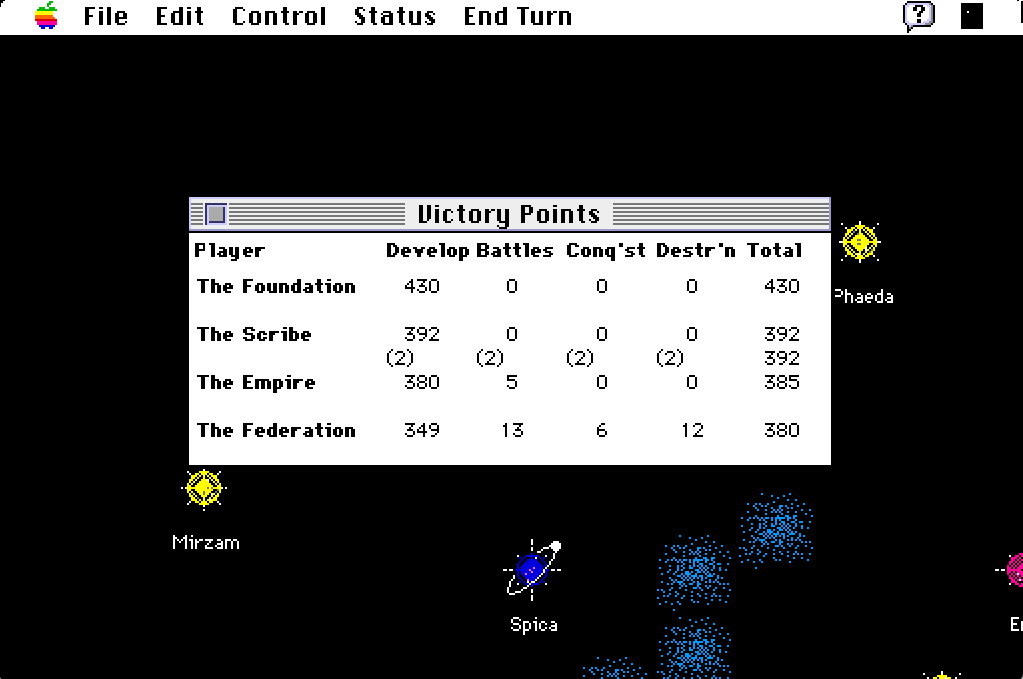
B. The Campaign of Sabik (Turn 39- 73)
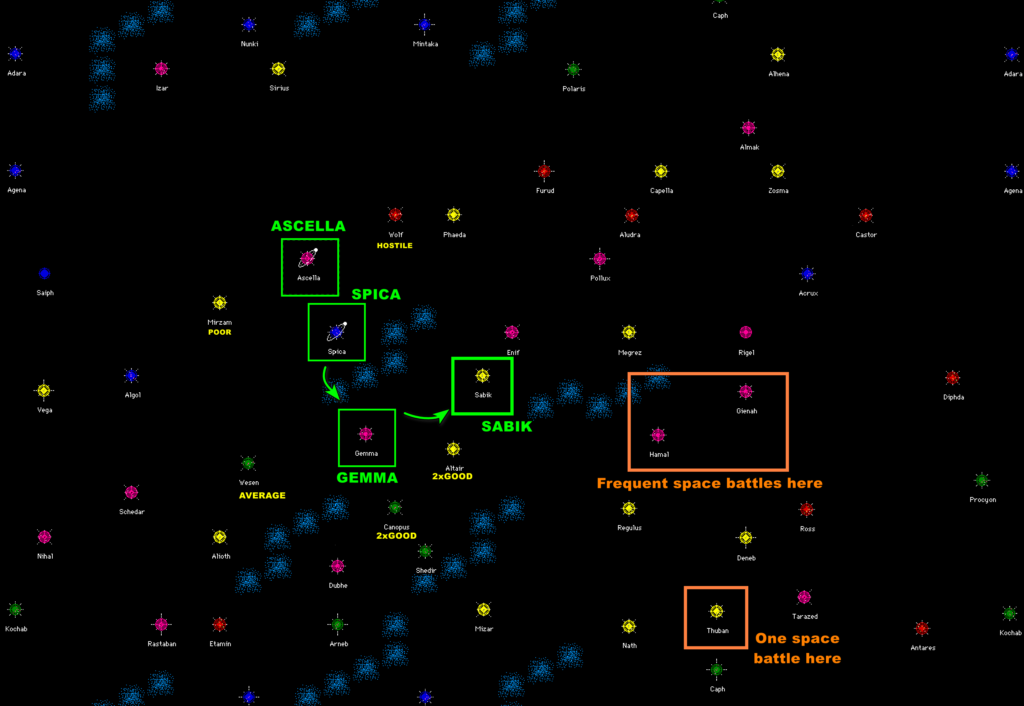
I colonize Gemma turn 40, and immediately use it as a springboard for space exploration. It turns out that Gemma is surrounded by wealthy worlds (sometimes two by system). I almost immediately expand to Sabik and more specifically colonize a planet called Sabik II.
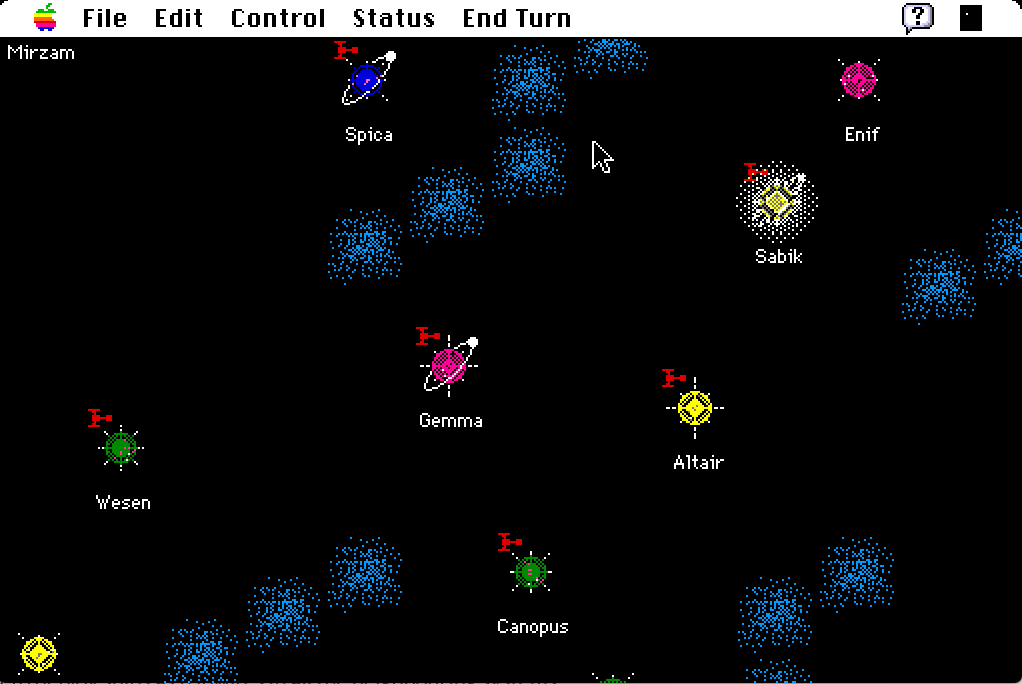
I also receive a first visit from my neighbours, more specifically “The Empire” (they sport the yellow Star Trek icon). In Reach For The Stars, “the neighbours are visiting” always means “battle” :
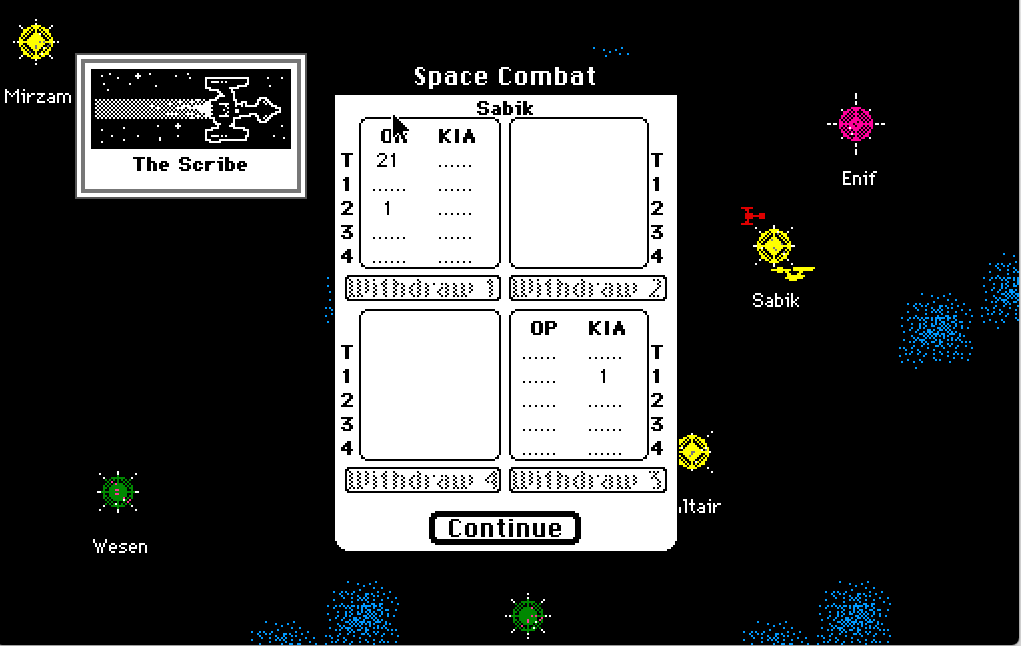
These are only probing attacks, but they make me wary. Instead of colonizing a fifth system, I decide that the next planet I will colonize turn 53 with be a good-but-not-great planet in the same system as Sabik II : Sabik V.
And turn 55, a small Imperial fleet arrives and destroys my fleet guarding the two Sabiks.
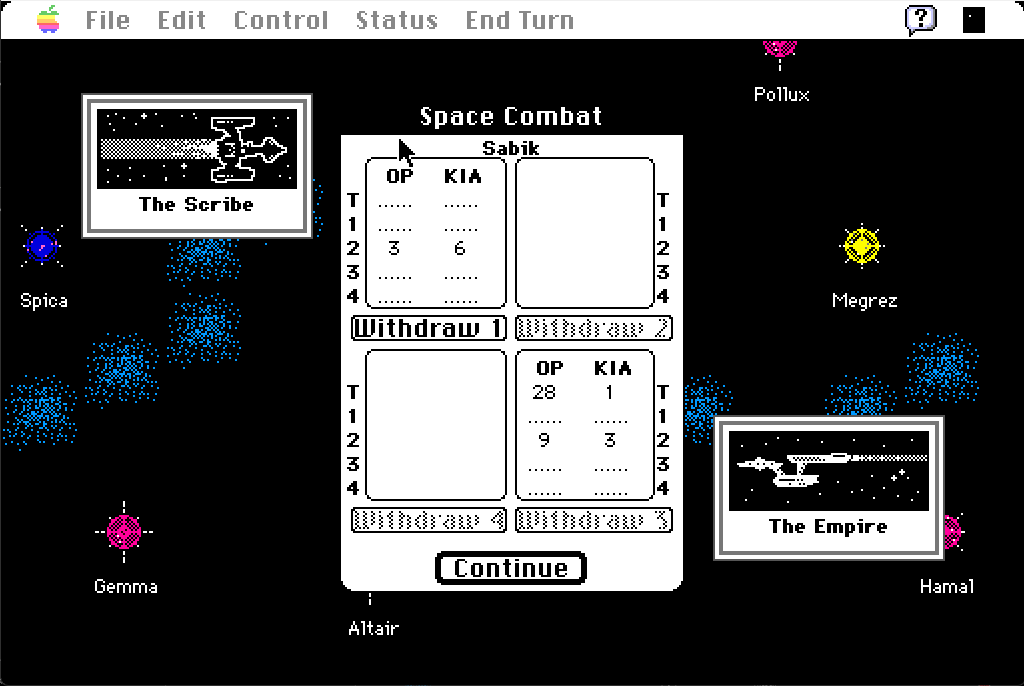
The enemy fleet is not large, but I had focused too much on industrial growth, so my own fleet was smaller. Once my fleet is destroyed, the just-colonized and defenceless Sabik V is immediately occupied.
Sabik II has some meager defence : not a lot, but enough to dissuade the Imperials. I immediately start to build defences. Hopefully they will hold.
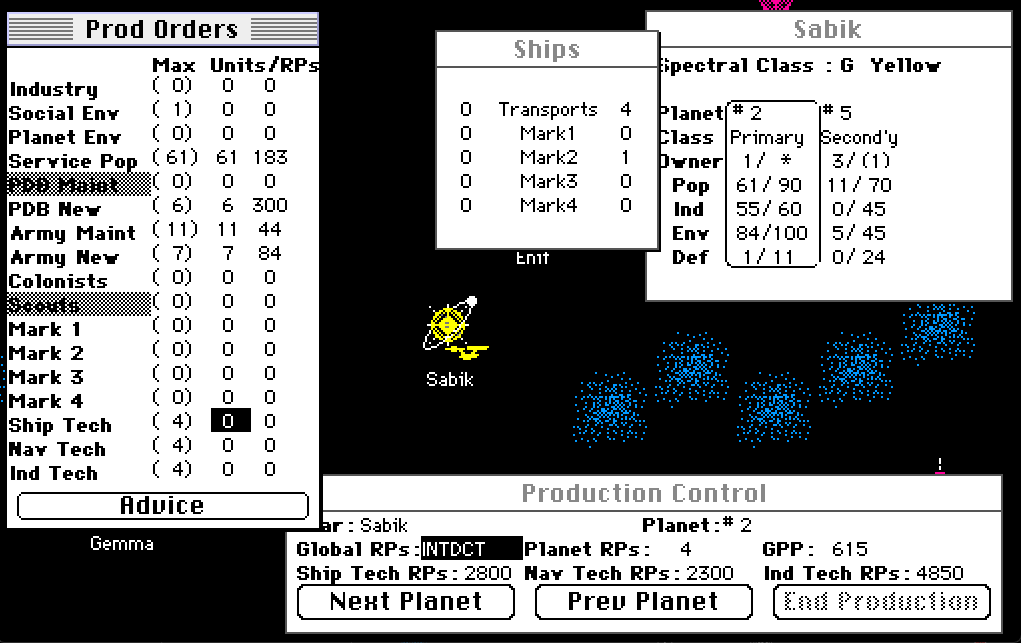
Two turns later, I finish researching Mark III fighters. I immediately build a first batch and send them fresh out of the factory to assert dominance over Sabik V.
Unbeknownst to me, the Imperials have also finished researching Mark III fighters, and immediately built a first – larger – batch, before sending them fresh out of the factory to assert dominance over Sabik II.
An encounter ensues :
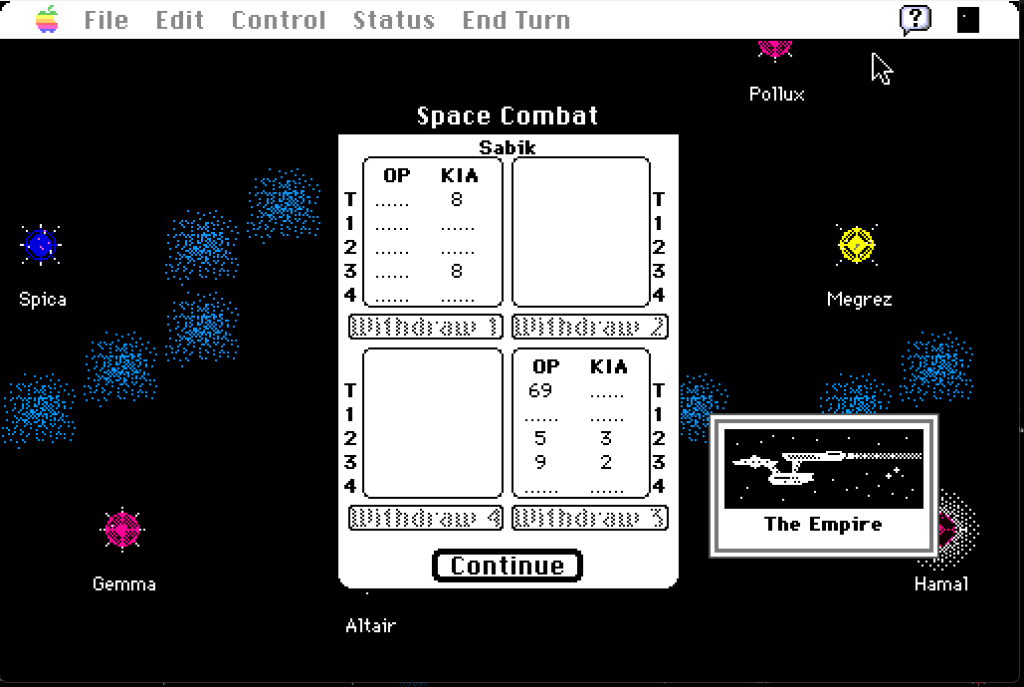
My fleet is crushed, and the Imperial fleet then attacks Sabik II. The planetary defences are destroyed, and the 69 enemy transport ships easily conquer the planet. That’s a decisive loss. The Empire takes the lead :
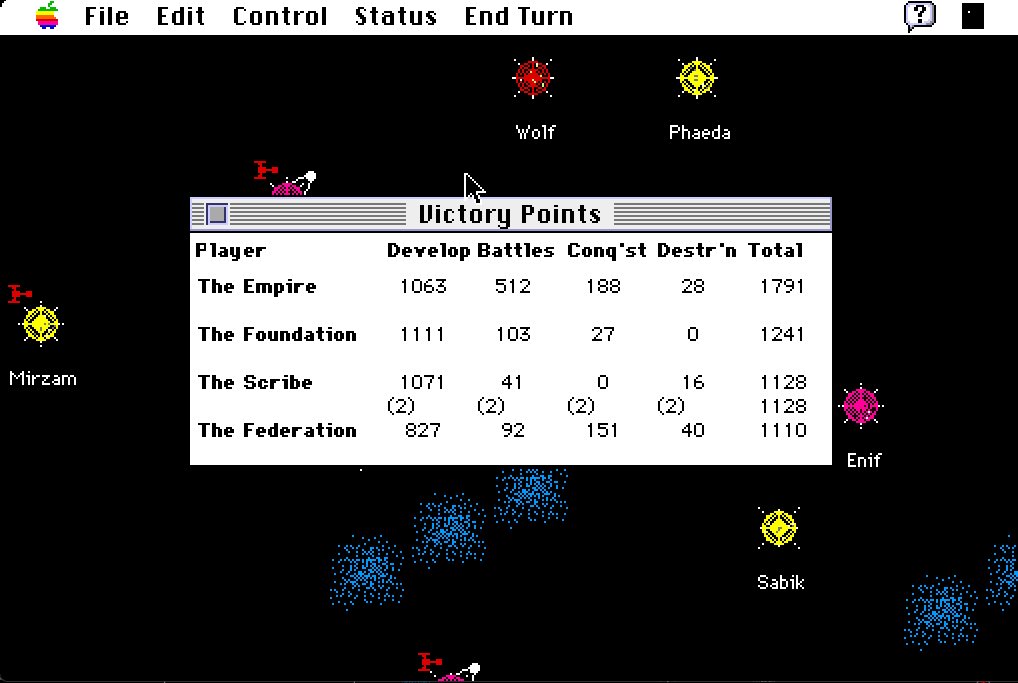
I regroup what’s left of my fleet in Ascella, ready for a last stand. The Empire ignores Gemma (possibly it believes it is still uncolonized) and push straight to Spica. Spica has solid planetary defence so there is nothing they can do there, and they don’t have the range to push to Ascella.
Meanwhile, the Empire starts to be attacked every turn by the two other AI civilizations everywhere in the galaxy – possibly the AI realized they had to gang-up on the leader. This gives me a bit of time, and with 2 fewer colonies to develop, I can focus my production on ships, both combat and transports. Starting turn 61, I also reach the last industry tech level, so I am producing a lot. I soon chase ships orbiting Spica, and turn 69 I move back to Sabik :
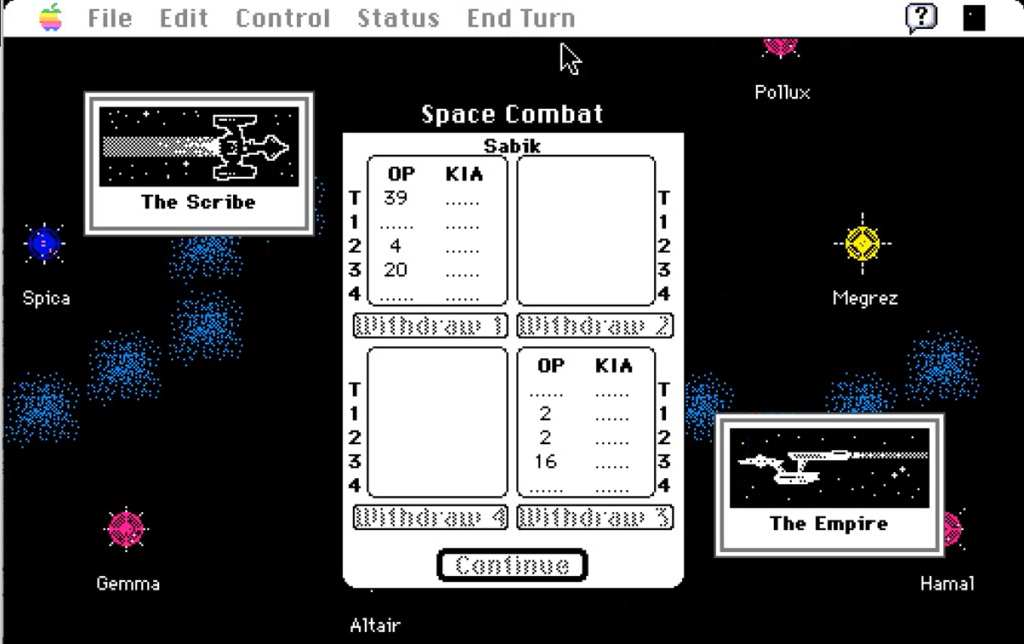
Victorious in space, I start the land operation. Sabik II is well-defended, but Sabik V does not have any planetary defences – only a handful of armies (a new feature of the advanced mode).
By the end of the turn, Sabik V is back under my control, and Sabik II blockaded !
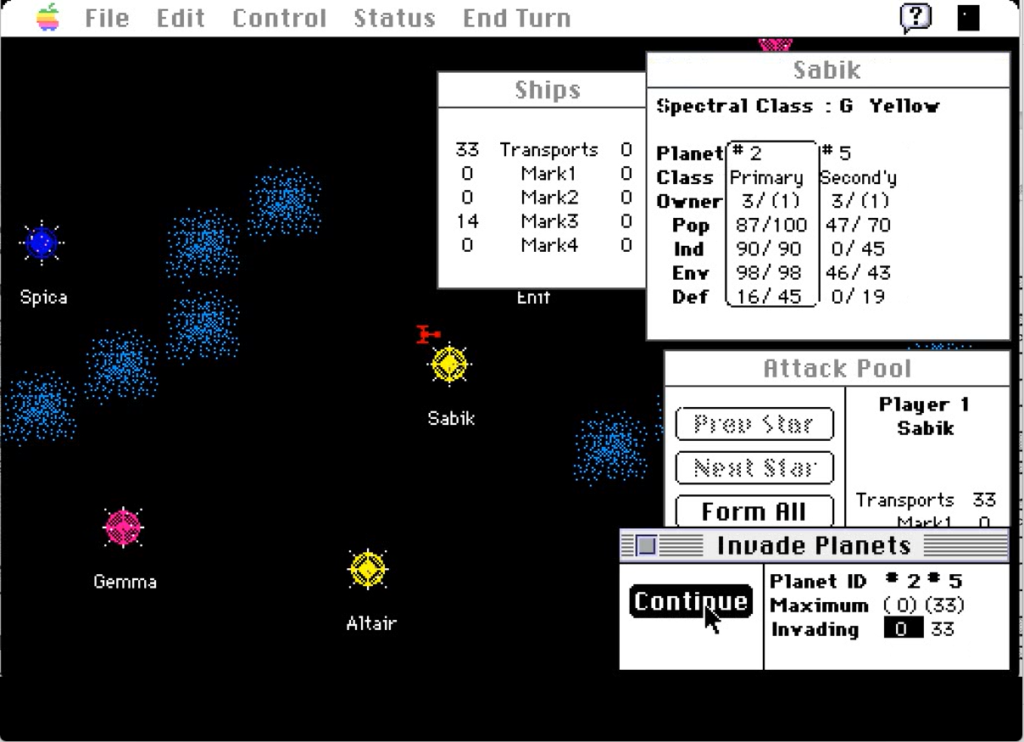
The Empire does not try to chase me out of the Sabik system anymore – I suspect it are kept busy by the other two AIs, and I patiently amass a fleet strong enough to liberate Sabik II. And finally, turn 73 :
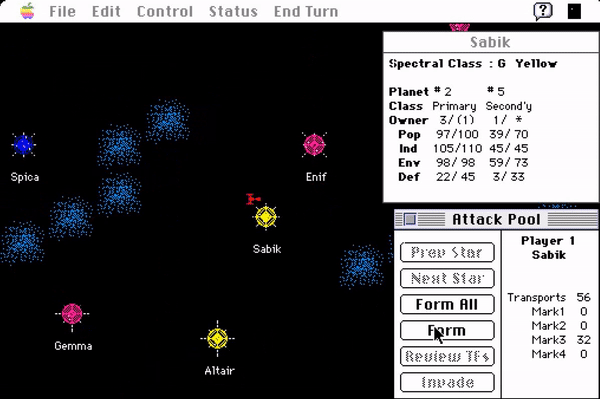
I prevailed in the campaign for Sabik, but I lost almost 25 turns doing so. I am now massively behind in points.
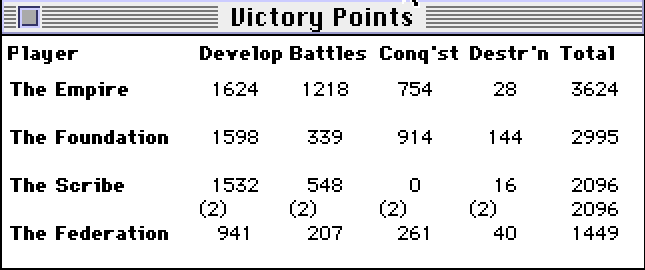
I have a lot of points to catch up, but the Empire looks off-balanced – else I would never have retaken Sabik. I need to push my advantage now !
C. The counter-attack (Turn 74- 100)
I want to counter-attack decisively, but I am blind – I don’t know any other world occupied by another civilization. Worse, my scouts sent to every single world in range come back empty !
This can only mean one thing : the Empire reached Sabik from a world from which AIs can reach me thanks to their range bonus of +1. Only one world fits : Regulus.
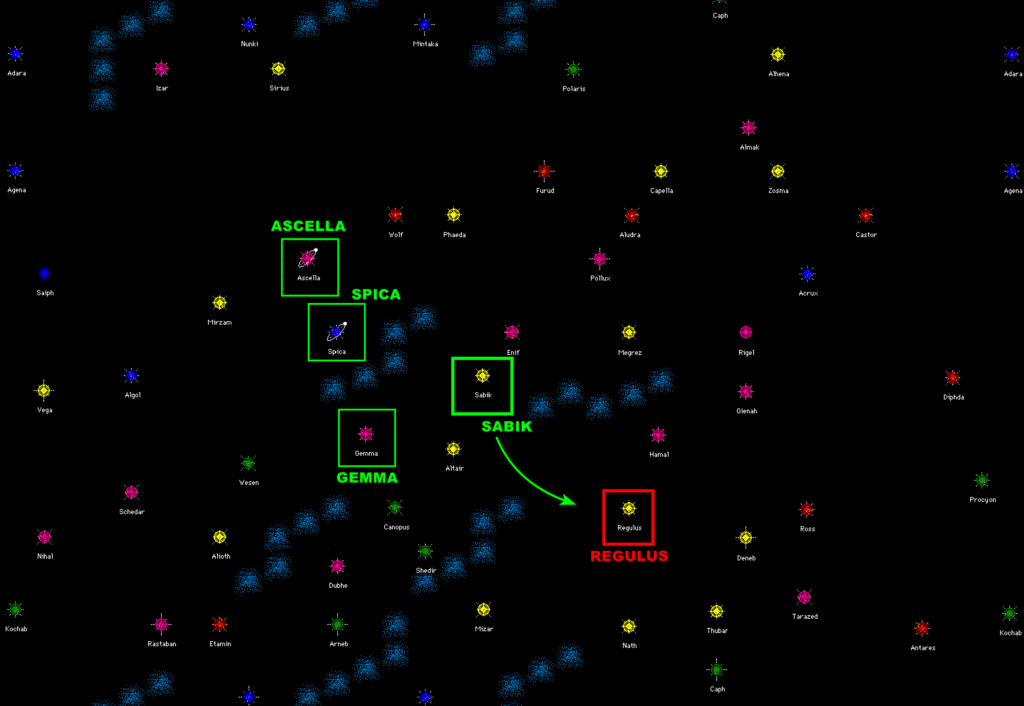
It is out of range for now, but I am only a few turns away from Navigation Tech level 4. Meanwhile, I receive a genuine surprise :
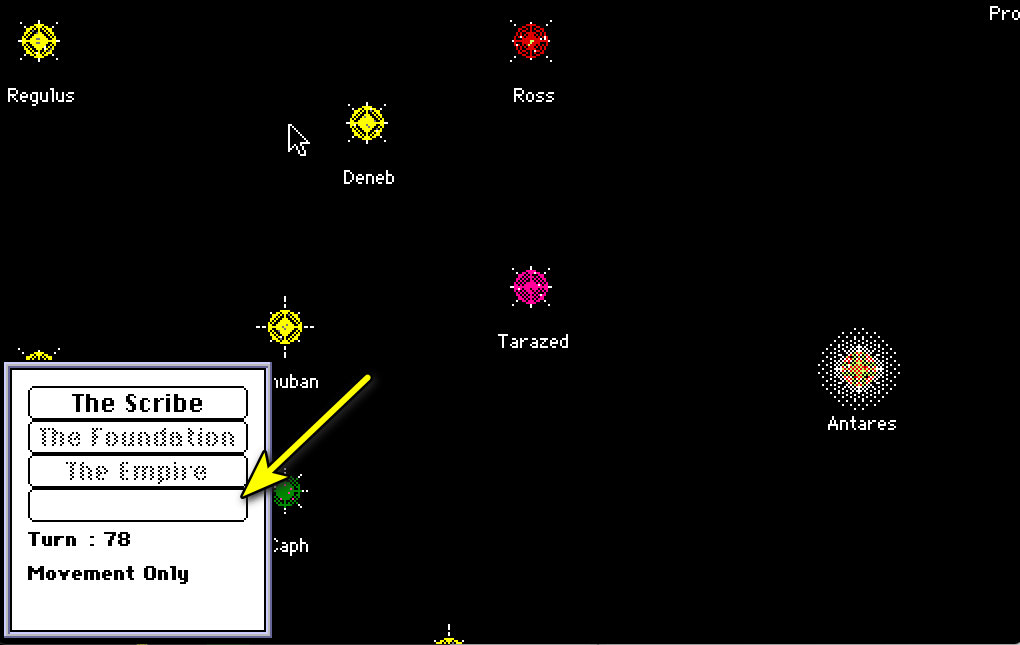
The Federation is no more. It has been wiped-out.
I can finally attack Regulus turn 80. Now I finally figure out why the Empire left me alone those last few turns :
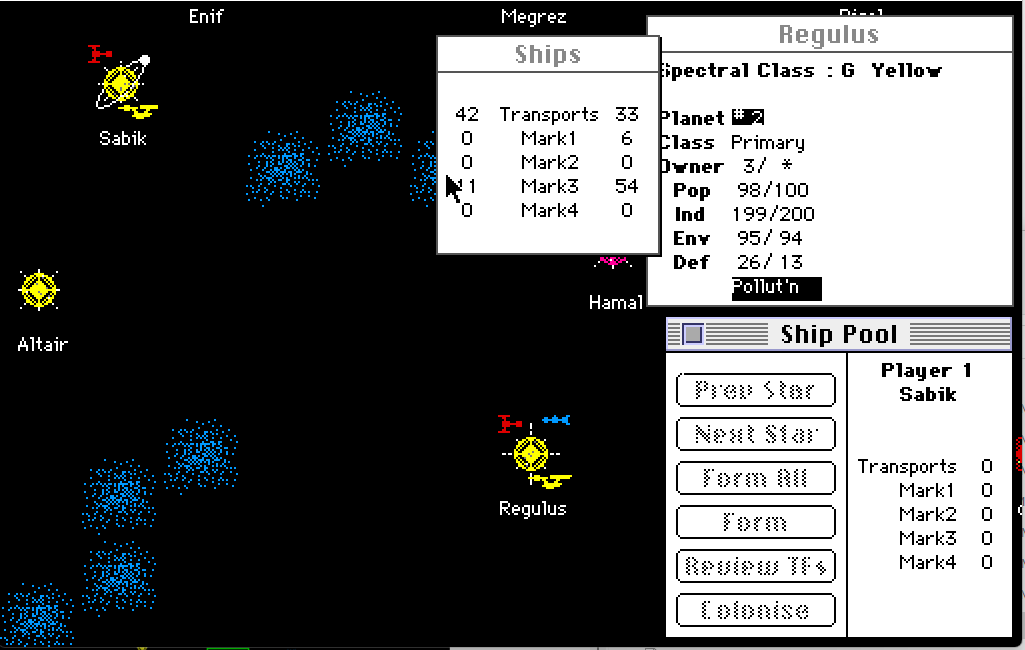
It turns out the Foundation had exactly the same idea and are also orbiting Regulus. After a three-way battle, they take control of the local space.
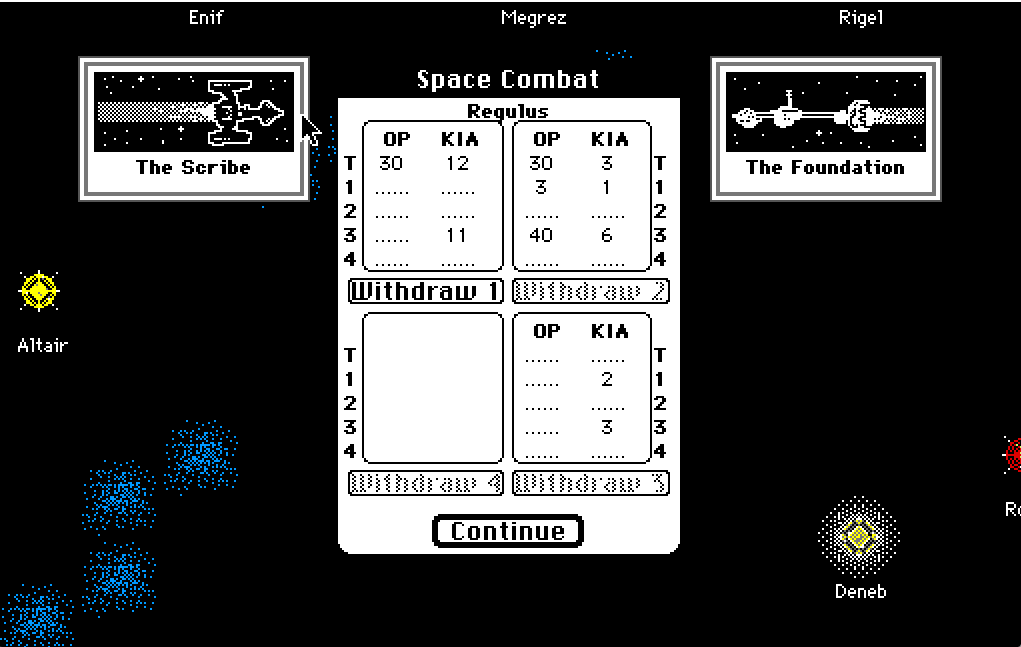
Unfortunately for the Foundation, I have just finished the last tech level for the warships, and I soon come back to face the Foundation fleet (turn 85) :
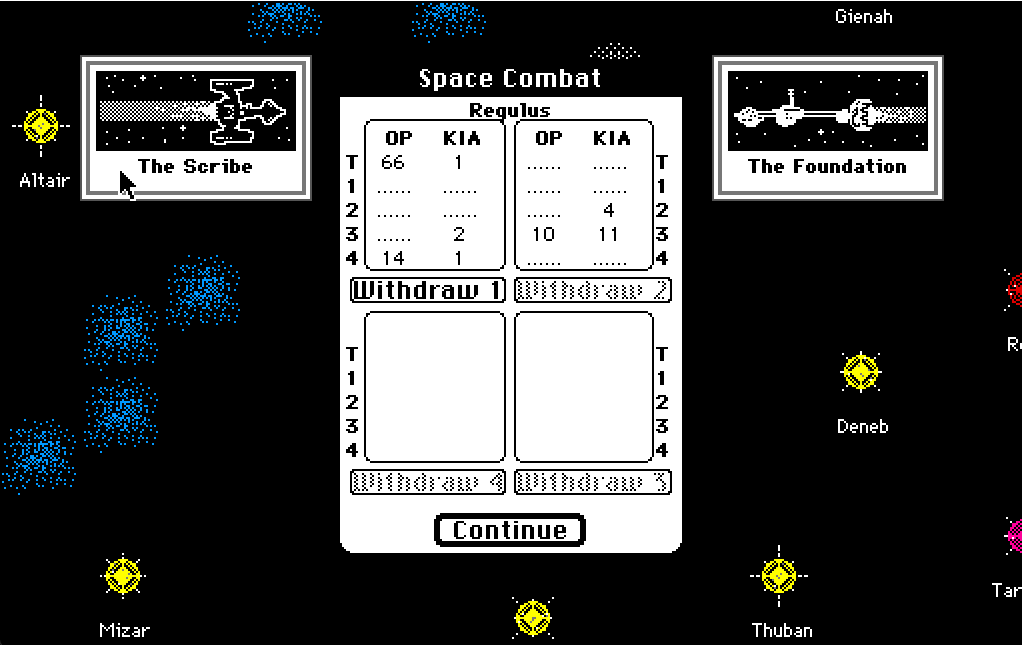
It turns out Regulus was a Federation planet, conquered by the Empire when I first “visited” here 4 turns ago and now under the control of the Foundation. It is virtually defenceless, and I easily capture it : the planet has completed its ownership grand slam.
Regulus allows me to reach a large number of new systems. I send ships all around, and quickly find out that a lot of those planets are populated by former Federation citizens. The Foundation & the Empire have been exhausted fighting each other over the spoils of the Federation : there is no fleet around able to challenge my Mark IV fleets, and static defences are nominal. 3 more worlds fall in a few turns.
I make up for a lot of lost ground, including in points, but all my new conquests were made to the detriment of the Empire. The Foundation has suffered some setbacks, but nothing major. Worryingly, Foundation scouts show up above my home system turn 93.
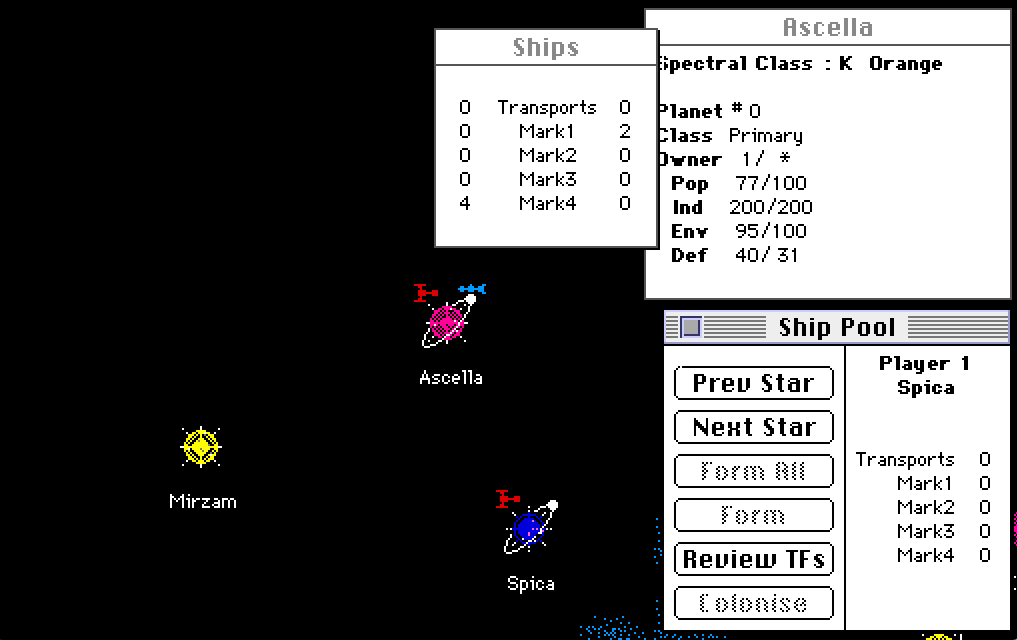
The same turn, a massive fleet of more than 120 Mark III ships arrives in Regulus, annihilating a small reserve that I had gathered here. Fortunately, the Foundation has no transport, so there is nothing more they can do.
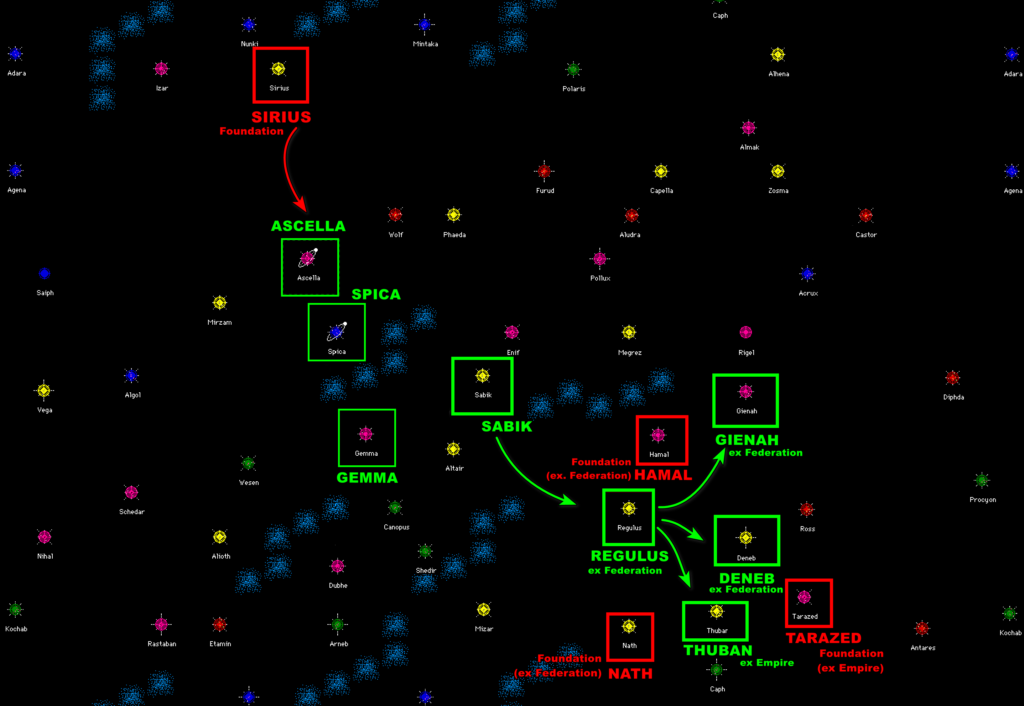
The massive Regulus fleet then disappears, but the existence of such a force means I need to regroup my fleet and focus, instead of attacking all the potential targets at the same time. Hamal falls, then Nath and finally Tarazed turn 100.
Meanwhile, I also send a fleet to Sirius where the crews sees something rare :
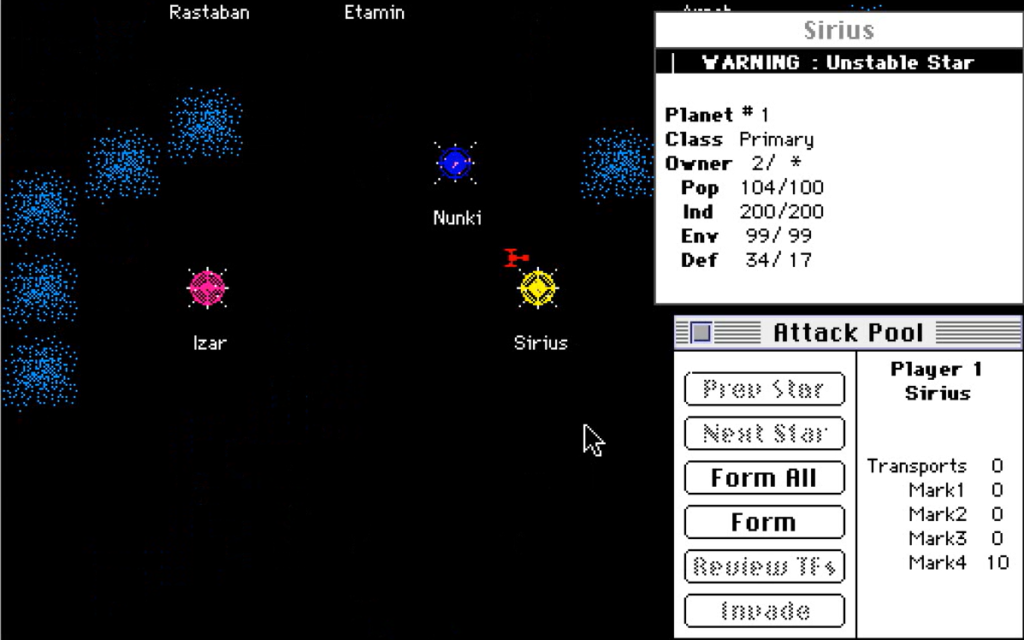
Sirius, which looks a lot like the Foundation’s home planet, has an “unstable star”. The whole system can become a black hole at any time.
But it is the end of the game, and “any time” could be after turn 100. Sirius is also poorly defended, so I send my fleet there nonetheless.
Poor call. “Any time” turns out to be “next turn” after all :
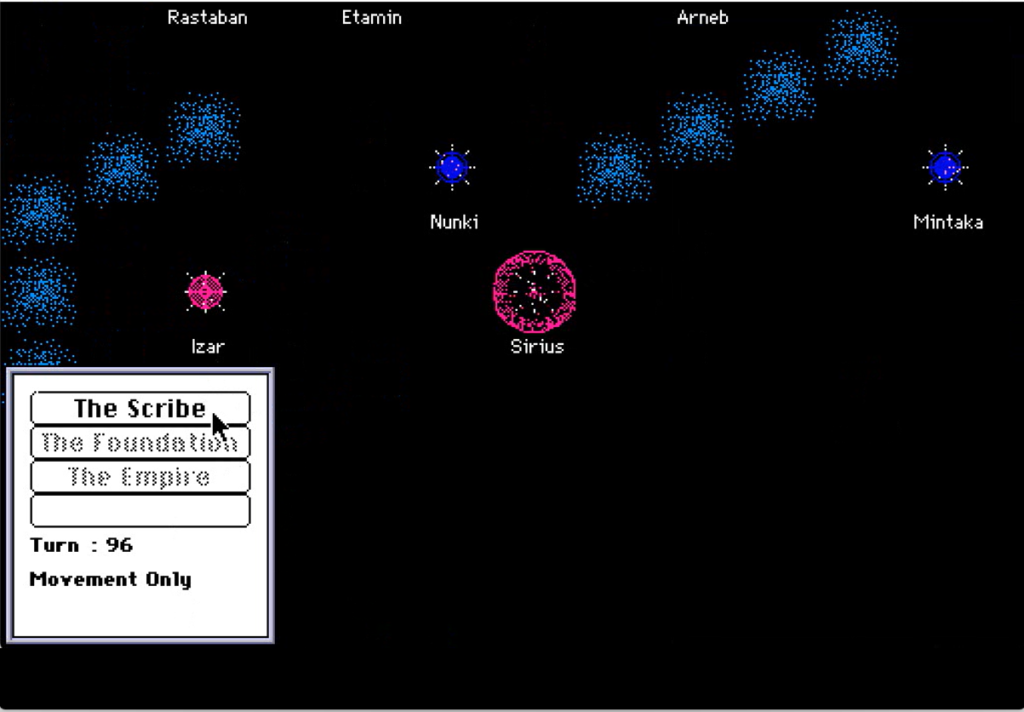
My fleet is destroyed, and soon all the ships that are on their way to Sirius will be too. Oh, well. At least that’s one system the foundation will not be able to use.
Still, somehow, the Foundation managed to reach Ascella again the very last turn with a massive fleet :
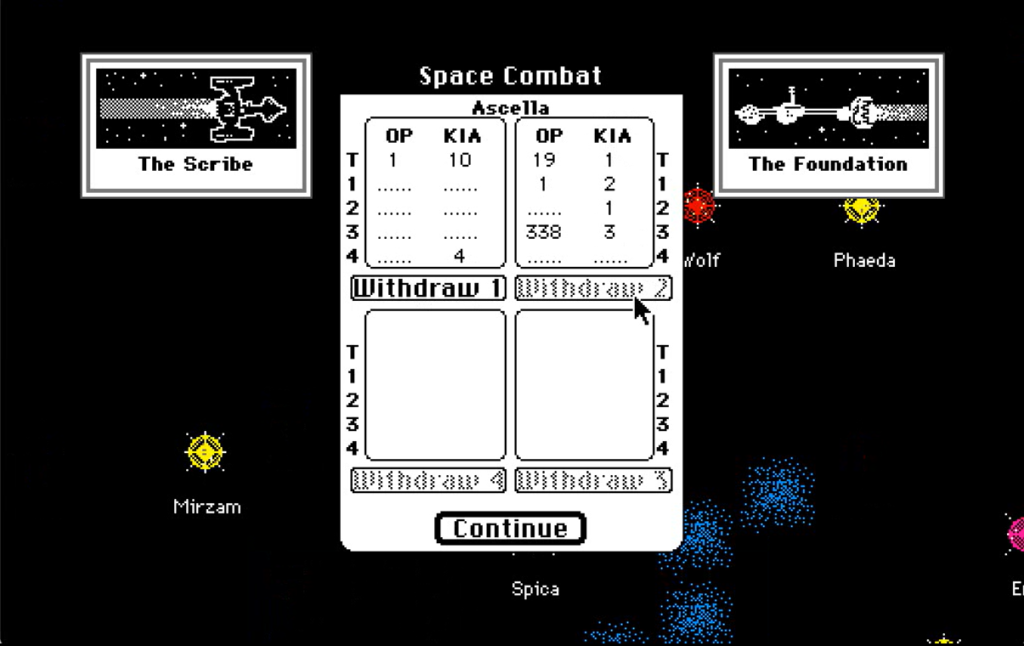
As massive as the fleet is (338 Mark III ships), it has almost no transport, so the game ends there with a Foundation fleet ominously orbiting my home system. That’s a cliffhanger that is never going to get resolved.
I clawed my way back to a lot of points, but alas I did not win this time :
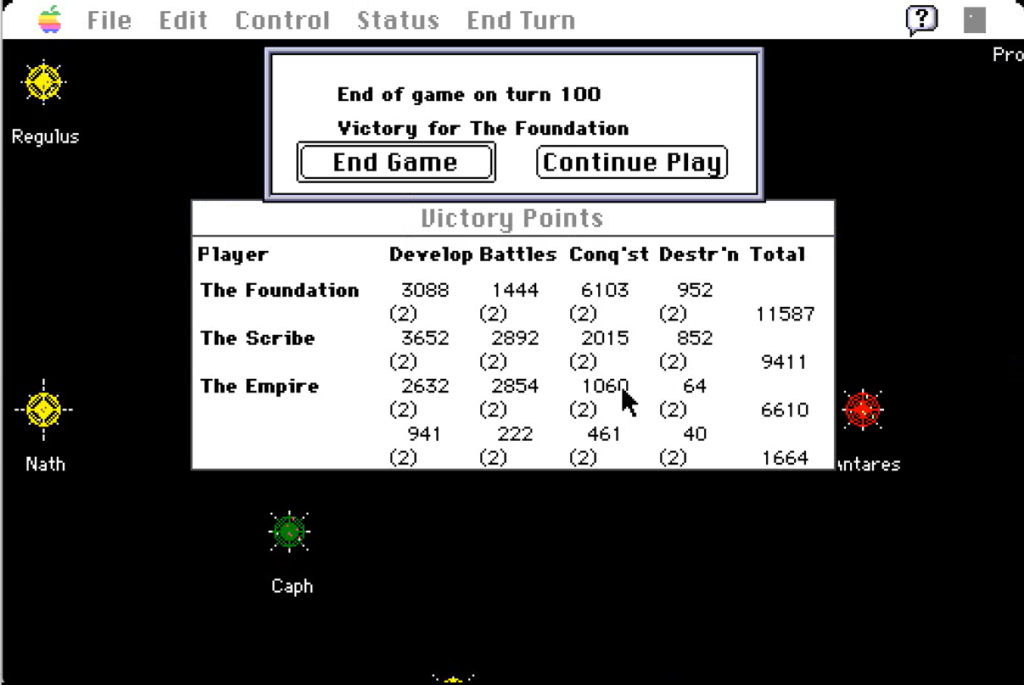
The MacIntosh version does not let you check the situation of the other players at the end of the game, so I can’t compare what I have to what the other factions have. I suspect the Empire had only poorly developed planets left (I haven’t seen any new fleets), while the Foundation was still spanning multiple systems and generally intact.
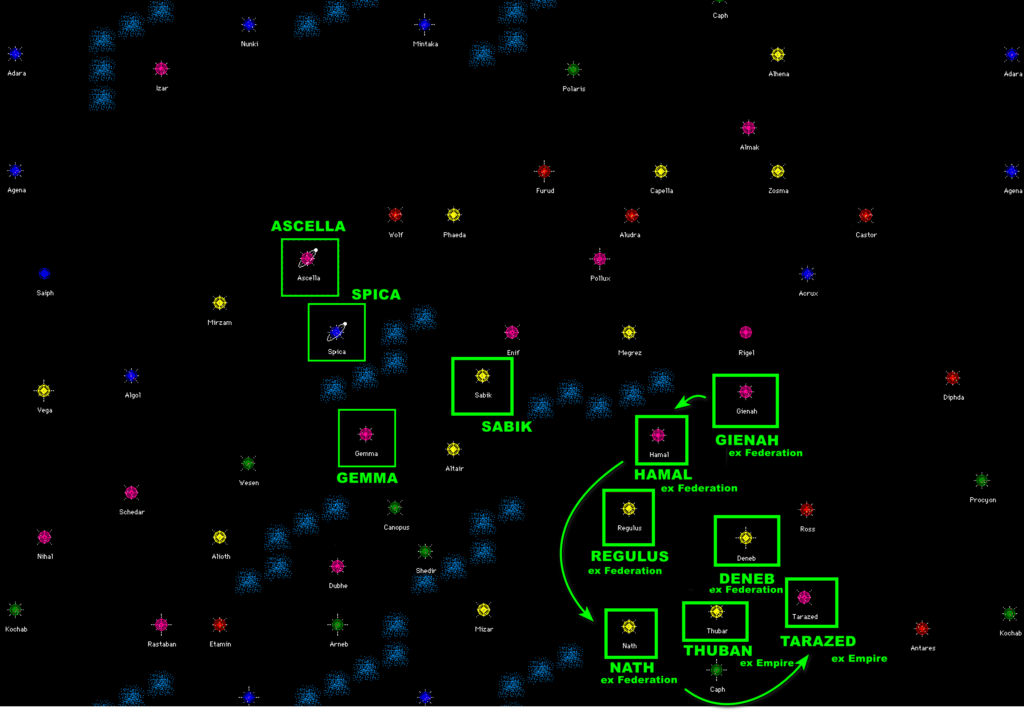
It was a solid experience, which played a bit differently from the vanilla game. In general, I think the first 20-30 turns were worse in advanced mode: there is an optimal path in the first 10 turns and due to limited range there is very little tension until the first contact is made. After that the game blossoms, with more choices than the vanilla game. Finally, once all technologies are researched, the endgame feels relatively similar to the vanilla ruleset. But more on this in the upcoming rating & review!
5 Comments
Glad you did this one. The rule changes definitely seem to add a lot of richness and depth to the basic framework.
Ah. This is the version I played. Spica, I always remember that name. It was great that you could make yourself the Klingon ships. Always thought they looked cooler than the Federation ships.
I remember hating to pay maintainence for anything. I liked the difference between armies and population, which Master of Orion annoyingly did away with. This is a really good game, worthy of replays. Simple, but with enough meat on the bones to make it meaningful. And of course, to the modern player, seeing Roger Keating and Ian Trout on the cover causes a giddy moment of pleasureable anticipation in the stomach.
Ive never seen this game in action, but now i have is super obvious where master of orion got the majority of their inspiration from
Yes, when I am going to create my list of « most influential games » it is going to be in. It is also easy to think that its design is the obvious way to make a 4X but the failure of the earlier Cosmic Balance II (and Andromeda Conquest to a lower extent) shows that obvious design is only obvious in hindsight.
The “space conquest game” has been around for a long time. This was just the first computerized version to get most of it right. The lineage goes all the way back to Stellar Conquest in 1975 and likely before. The game continues today in instances like Remnants of the Precursors.